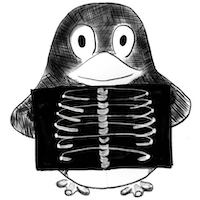Receive a weekly summary and discussion of the top papers of the week by leading researchers in the field.
 General
General
Arabic Syntactic Diacritics Restoration Using BERT Models.
In Computational intelligence and neuroscience
Nazih Waleed, Hifny Yasser
2022
 General
General
CXR-Net: A Multitask Deep Learning Network for Explainable and Accurate Diagnosis of COVID-19 Pneumonia from Chest X-ray Images.
In IEEE journal of biomedical and health informatics
Zhang Xin, Han Liangxiu, Sobeih Tam, Han Lianghao, Dempsey Nina, Lechareas Symeon, Tridente Ascanio, Chen Haoming, White Stephen, Zhang Daoqiang
2022-Nov-09
 General
General
Hybrid quantum neural network for drug response prediction
ArXiv Preprint
Asel Sagingalieva, Mohammad Kordzanganeh, Nurbolat Kenbayev, Daria Kosichkina, Tatiana Tomashuk, Alexey Melnikov
2022-11-10
 Surgery
Surgery
Artificial Intelligence You Can Trust: What Matters Beyond Performance When Applying Artificial Intelligence to Renal Histopathology?
In Journal of the American Society of Nephrology : JASN
Ayorinde John O O, Citterio Federica, Landrò Matteo, Peruzzo Elia, Islam Tuba, Tilley Simon, Taylor Geoffrey, Bardsley Victoria, Liò Pietro, Samoshkin Alex, Pettigrew Gavin J
2022-Nov-09
AI, arteriosclerosis, artificial intelligence, glomerulosclerosis, interstitial fibrosis, kidney biopsy, renal fibrosis, renal pathology, renal transplantation, transplant pathology
 General
General
Clinical utility of automatic phenotype annotation in unstructured clinical notes: intensive care unit use.
In BMJ health & care informatics
OBJECTIVE :
METHODS :
RESULTS :
CONCLUSION :
Zhang Jingqing, Bolanos Trujillo Luis Daniel, Tanwar Ashwani, Ive Julia, Gupta Vibhor, Guo Yike
2022-Nov
Artificial intelligence, Deep Learning, Electronic Health Records, Machine Learning, Medical Informatics Applications
 Radiology
Radiology
Model-based Deep Learning Reconstruction Using a Folded Image Training Strategy for Abdominal 3D T1-weighted Imaging.
In Magnetic resonance in medical sciences : MRMS : an official journal of Japan Society of Magnetic Resonance in Medicine
PURPOSE :
METHODS :
RESULTS :
CONCLUSION :
Funayama Satoshi, Motosugi Utaroh, Ichikawa Shintaro, Morisaka Hiroyuki, Omiya Yoshie, Onishi Hiroshi
2022-Nov-08
deep learning, image reconstruction, liver imaging, network training
Weekly Summary
Receive a weekly summary and discussion of the top papers of the week by leading researchers in the field.
